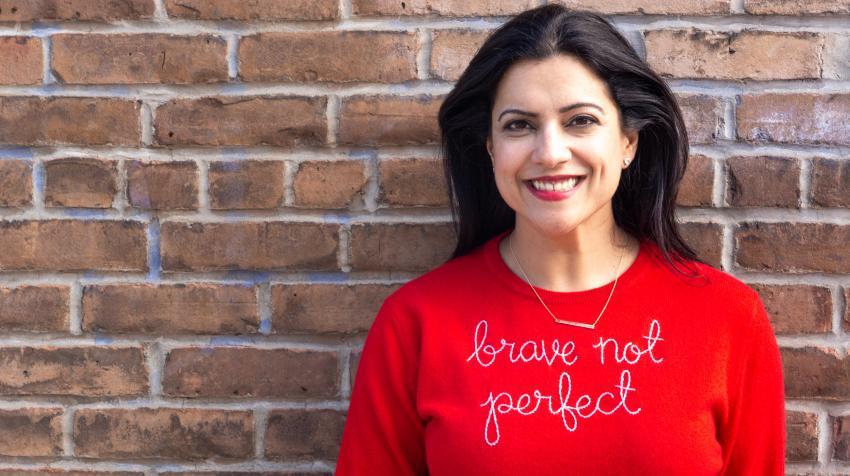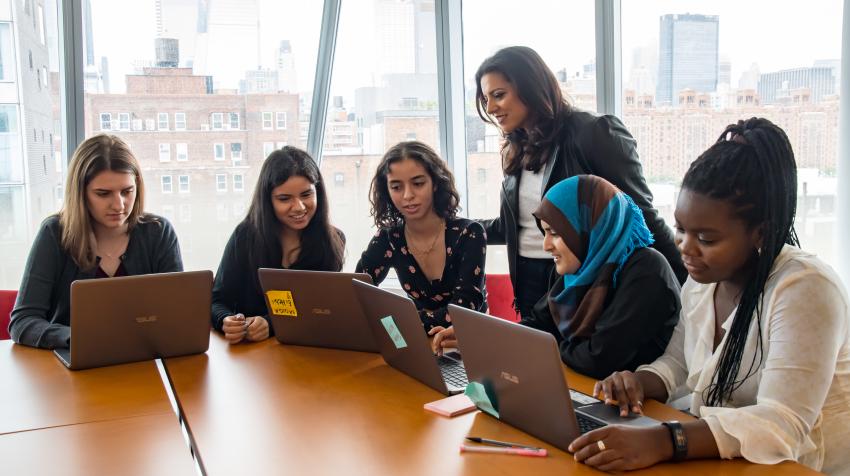In 2015, the United Nations established the International Day of Women and Girls in Science (11 February) to raise awareness about the importance of diversifying STEM (science, technology, engineering and mathematics), and to break down the barriers preventing access to these fields for women and girls.
Many people might be shocked to learn that if it were 1975, we wouldn’t necessarily need an International Day to promote women in STEM. At that time, women dominated in those sectors. They played important roles at other points in history, as well. Grace Hopper, Ada Lovelace, Katherine Johnson, Dorothy Vaughn, and Joan Clarke, for example, were all women pioneers in computing. Today, however, women hold only 25 per cent of computing jobs in the United States. Women and girls comprise just 19 per cent of students who receive degrees in computing, and represent just 23 per cent of high school students sitting for advanced placement exams in computer science. The numbers are similar in many countries around the world.
Most people recognize that the lack of women in tech is a real problem. We’re not equipping our girls with the tools they need to access the highest-paying, fastest-growing jobs in the global economy. We are forgoing innovation from girls and women, who have incredible ideas and potential for transforming society. We’re leaving our girls, communities and entire markets behind. The question, then, is how do we bring more girls into this field?
For decades, magazines, advertising and other media have made girls and women feel like STEM isn’t a field for them.
From the perspective of Girls Who Code, a nonprofit organization that aims to increase the number of women in computer science, there are three key approaches that can make a real impact on the gender gap in tech.
First, we need to address cultural impediments. Some cultures perpetuate stereotypes about who belongs in tech and who doesn’t. For decades, magazines, advertising and other media have made girls and women feel like STEM isn’t a field for them. So, we need to counter culture with culture. We must elevate female role models—especially girls and women of colour—in pop culture, business and everyday life.
Second, we need to encourage our girls to be brave, rather than to simply strive for perfection. Programming is all about risk-taking, tinkering and trying new things. It’s about trial and error and the acceptance of setbacks. Unfortunately, we raise our girls to be perfect, to avoid failure, and thus they sidestep fields such as programming, which are fundamentally about failing and learning. Instead, we should teach girls to be brave, to try new things, even in the face of repeated failure. Bravery is built into our curriculum at Girls Who Code. And it works. We’ve taught over 185,000 girls, and our alumni are majoring in computer science at a rate 15 times higher than the United States national average.

Third, we need dedicated commitments and investments from the private sector, philanthropies and governments. Organizations like ours can only get girls so far and only with sustained financial support from our partners. But even when we succeed in helping girls overcome the many obstacles they face in primary school and college, they will almost certainly encounter bias and discrimination in the workplace. These issues have been built into the industry from the very beginning. It’s critical that the private and public sector intimately understand the need for diversity and to commit to change.
For those hiring people for STEM jobs, this means implementing measures such as more diverse interview panels. For legislators, it means understanding and passing gender-specific education policies. For those involved in philanthropy, it means sustained and targeted giving. For all, it means decency.
When I founded Girls Who Code, it was because I understood that these jobs had the power to lift entire families into the middle class and transform our modern-day technologies and economies. Data, after all, shows that the number of women in a country’s workforce is directly related to its economic prosperity. We also know that the more girls are exposed to women innovators, the more likely they are to innovate themselves. But what I’ve learned over the past eight years is that this is about so much more than technical skills, jobs and wages. Because when you teach girls to code, they go on to do amazing things for their families and communities. I’ve seen it time and time again.
Take Anastasia, for example, who patented gun control technology after being impacted by mass shootings in the United States. Or Natalia, a Mexican immigrant who is working as a web developer for a film about immigration law. Or Haley, who created a database that helps families rent or sell expensive musical instruments at more affordable prices. These girls have utilized or created the kinds of technologies that reflect their life experiences, and that can ultimately help advance sustainable development worldwide.
Girls Who Code has taught hundreds of thousands of girls around the world. I am often asked the same question from donors, supporters and parents: “How long will it take to close the gender gap in tech?” My answer hasn’t changed since I began this work: we can do it in our lifetimes, so long as we commit to equipping girls with the technical skills, bravery and sisterhood that they need to take their destiny into their own hands. We can close this gap in a single generation.
10 February 2020
The UN Chronicle is not an official record. The views expressed by individual authors, as well as the boundaries and names shown and the designations used in maps or articles, do not necessarily imply official endorsement or acceptance by the United Nations.
The UN Chronicle is not an official record. It is privileged to host senior United Nations officials as well as distinguished contributors from outside the United Nations system whose views are not necessarily those of the United Nations. Similarly, the boundaries and names shown, and the designations used, in maps or articles do not necessarily imply endorsement or acceptance by the United Nations.




